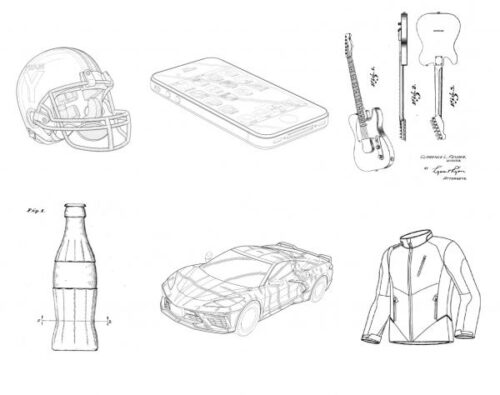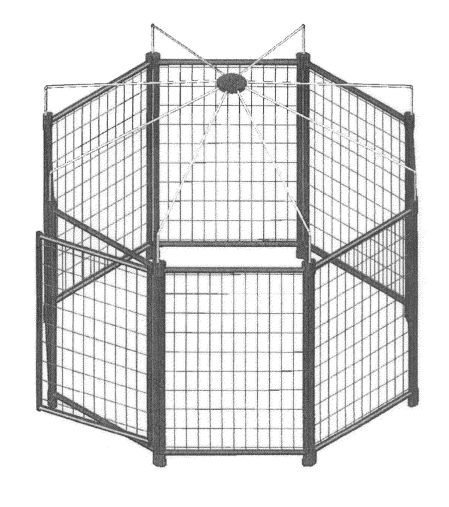
US patent law provides for exclusive rights in an original ornamental design through issuance of a design patent. The primary focus of a design patent is not the functional features of a product but rather its ornamental features. The "claimed design" must be novel and non-obvious in its ornamental aspects. The protection it offers is limited to the appearance of the item as depicted and claimed in the patent drawings.
A design patent application may include multiple versions or embodiments of the claimed design. During the patent examination process before the United States Patent and Trademark Office (USPTO), a patent examiner may issue a restriction requirement in an application that includes multiple embodiments. This procedural step is rooted in the principle that each design patent application should cover only a single claimed design. If designs are not substantially similar, they may be divided into separate filings. This requirement ensures that design patents issue for a single ornamental design.
Applicants faced with a restriction requirement have the option to pursue each segregated design through a divisional application. This allows the patent applicant to continue seeking protection for all originally presented designs. However, a restriction requirement may create prosecution estoppel (or file wrapper estoppel) that can impact the rights of the patent owner.
Since the Federal Circuit’s decision in Pacific Coast Marine Windshields in 2014, patent attorneys have been wary of the potential consequences of filing design patent applications including two designs or more. In Pacific Coast, the court held that under the doctrine of prosecution history estoppel, when a design patent applicant agrees to elect specific embodiments in response to a restriction requirement, the unelected embodiments fall outside the scope of a design patent that issues from the application. Generally speaking, the issuing design patent cannot be successfully asserted against a third party practicing the non-elected embodiment. In the wake of the Pacific Coast case, it became clear that divisional design patent applications must be filed in order to secure patent rights in any non-elected embodiments.
However, in the Advantek Mktg. v. Shanghai Walk-Long Tools Co. case, the Federal Circuit court of appeals was again presented with a design patent case involving prosecution history estoppel arising from a restriction requirement. In Advantek Mktg., Advantek filed suit against its former contract manufacturer (Shanghai Walk-Long Tools Co.), asserting that Walk-Long infringed US Design Patent No. D715,006 covering a portable kennel. The application for the ‘006 design patent was filed with five figures: the first four figures showed an octagonal pet kennel design without a cover, and the fifth figured showed the same octagonal design with a cover. The patent office found that the application included more than one design and issued a restriction requirement in the application identifying two distinct embodiments – (1) the first four figures as a subcombination and (2) the fifth figure as a combination – and required the election of one of the embodiments. Advantek elected the first embodiment as shown in the first four figures (the kennel with no cover).

The allegedly infringing kennels sold by Walk-Long included a cover. Walk-Long filed a motion for judgment on the pleadings under 12(c) asserting that the scope of the ‘006 patent excludes a kennel design with a cover under the doctrine of prosecution history estoppel as a result of the election made during the examination of the application for the ‘006 patent. The US District Court for the Central District of California granted judgment on the pleadings, agreeing with Walk-Long that prosecution history estoppel barred Advantek’s claim.
On appeal, the Federal Circuit reversed and remanded in spite of the prosecution history estoppel. Advantek successfully argued that, even though it had surrendered the embodiment of the kennel that included a cover, the kennel sold by Walk-Long necessarily includes the design covered by the ‘006 patent because it is a “skeletal structure” onto which a cover can be added. The Federal Circuit agreed, pointing to the US Supreme Court’s recent decision in Samsung Electronics Co. v. Apple Inc., in which the court affirmed that a design patent can cover a component of a larger product and that such design patent can be infringed by a product that incorporates the patented design. The court stated that:

The Federal Circuit accordingly concluded that Advantek was not estopped from asserted the ‘006 patent against Walk-Long.
While this case reiterates the potential dangers of surrendering embodiments in design patent applications, it also shows that the scope of the surrendered subject matter can be narrow. The outcome in this case is not unlike the Pacific Coast case, in which it was held that the accused design fell within the scope of the asserted patent, even though some of the embodiments in the plaintiff’s patent application were surrendered as a result of a restriction requirement. The surrendered design in that case was a boat windshield design having two holes therein, whereas the asserted design patents covered boat windshield designs with no holes and four holes. The Federal Circuit concluded that the patentee had surrendered only the two-hole and not the accused three-hole design, and that prosecution history estoppel did prevent the plaintiff from asserting infringement based on the three-hole design.
In both the Pacific Coast and the Advantek Mktg. cases, the subject matter surrendered and subject to prosecution history estoppel was very narrow in scope. In fact, in the Advantek Mktg. case, the scope elected embodiment of the ‘006 patent essentially swallowed the scope of the surrendered embodiment. The two embodiments were a combination and subcombination. In such situations, it seems intuitive that the broader subcombination should be elected, barring other considerations. However, even though it appears that prosecution history estoppel resulting from restriction requirements and elections of species may have a limited impact on the scope of a design patent, patent practitioners should remain wary of its potential threat and thoroughly consider filing divisional applications to cover the withdrawn embodiments or species.

"Mark and William are stellar in the capabilities, work ethic, character, knowledge, responsiveness, and quality of work. Hubby and I are incredibly grateful for them as they've done a phenomenal job working tirelessly over a time span of at least five years on a series of patents for hubby. Grateful that Fresno has such amazing patent attorneys! They're second to none and they never disappoint. Thank you, Mark, William, and your entire team!!"
Linda Guzman

Sierra IP Law, PC - Patents, Trademarks & Copyrights
FRESNO
7030 N. Fruit Ave.
Suite 110
Fresno, CA 93711
(559) 436-3800 | phone
BAKERSFIELD
1925 G. Street
Bakersfield, CA 93301
(661) 200-7724 | phone
SAN LUIS OBISPO
956 Walnut Street, 2nd Floor
San Luis Obispo, CA 93401
(805) 275-0943 | phone
SACRAMENTO
180 Promenade Circle, Suite 300
Sacramento, CA 95834
(916) 209-8525 | phone
MODESTO
1300 10th St., Suite F.
Modesto, CA 95345
(209) 286-0069 | phone
SANTA BARBARA
414 Olive Street
Santa Barbara, CA 93101
(805) 275-0943 | phone
SAN MATEO
1650 Borel Place, Suite 216
San Mateo, CA, CA 94402
(650) 398-1644. | phone
STOCKTON
110 N. San Joaquin St., 2nd Floor
Stockton, CA 95202
(209) 286-0069 | phone
PORTLAND
425 NW 10th Ave., Suite 200
Portland, OR 97209
(503) 343-9983 | phone
TACOMA
1201 Pacific Avenue, Suite 600
Tacoma, WA 98402
(253) 345-1545 | phone
KENNEWICK
1030 N Center Pkwy Suite N196
Kennewick, WA 99336
(509) 255-3442 | phone
2023 Sierra IP Law, PC - Patents, Trademarks & Copyrights - All Rights Reserved - Sitemap Privacy Lawyer Fresno, CA - Trademark Lawyer Modesto CA - Patent Lawyer Bakersfield, CA - Trademark Lawyer Bakersfield, CA - Patent Lawyer San Luis Obispo, CA - Trademark Lawyer San Luis Obispo, CA - Trademark Infringement Lawyer Tacoma WA - Internet Lawyer Bakersfield, CA - Trademark Lawyer Sacramento, CA - Patent Lawyer Sacramento, CA - Trademark Infringement Lawyer Sacrament CA - Patent Lawyer Tacoma WA - Intellectual Property Lawyer Tacoma WA - Trademark lawyer Tacoma WA - Portland Patent Attorney - Santa Barbara Patent Attorney - Santa Barbara Trademark Attorney